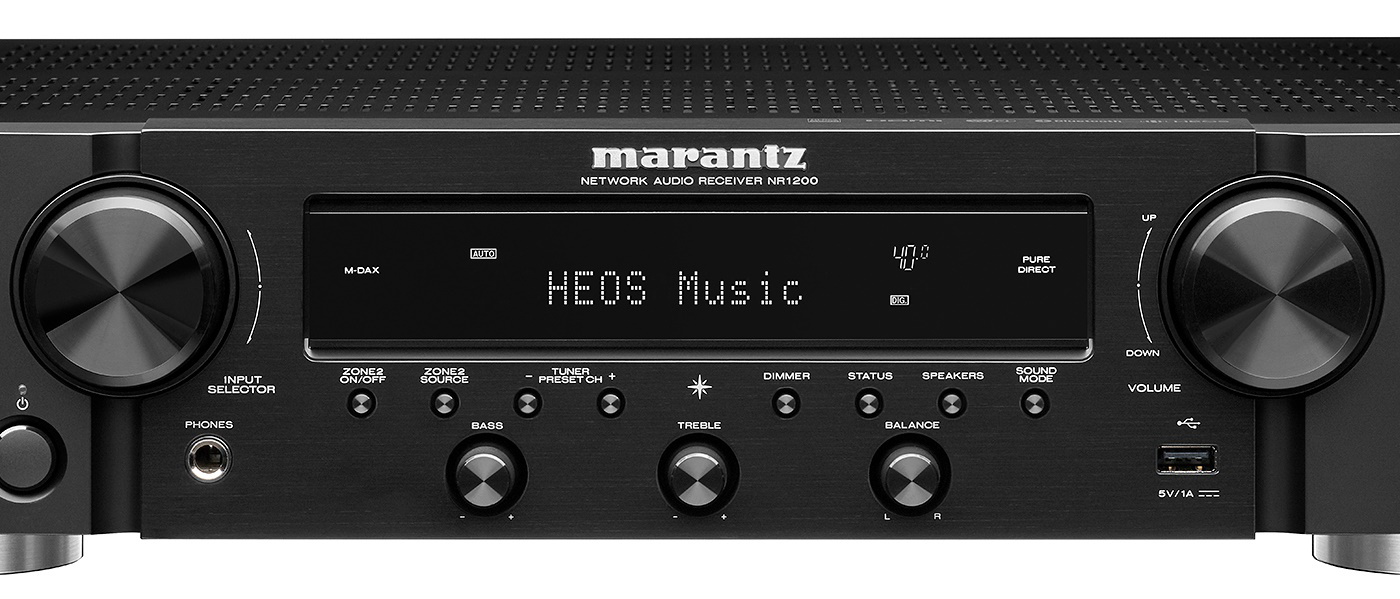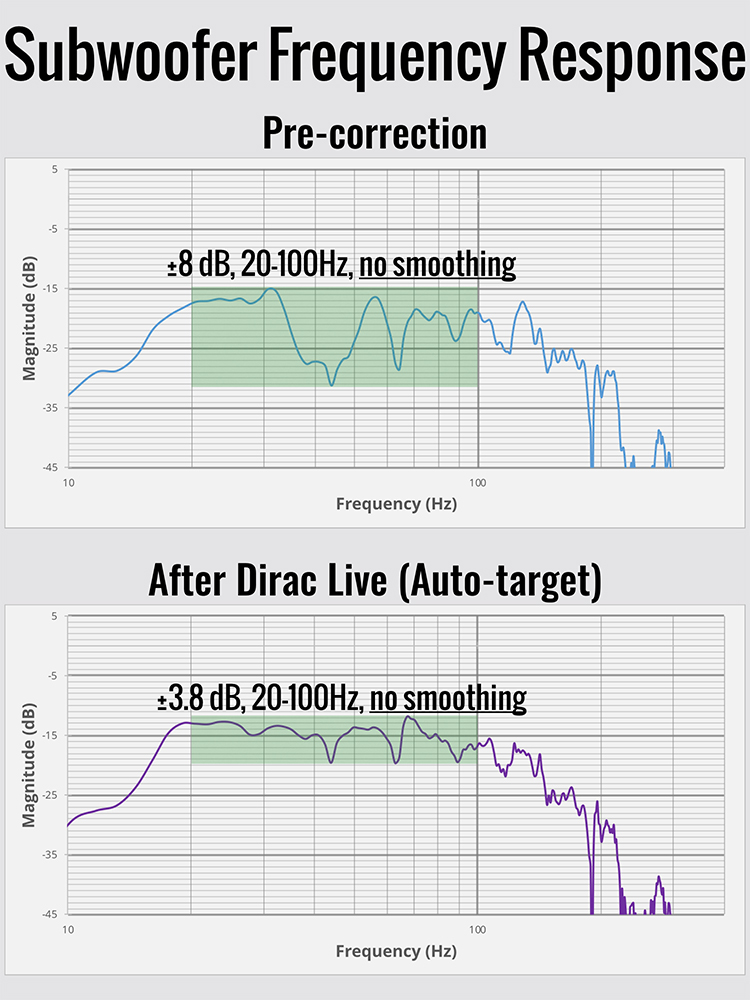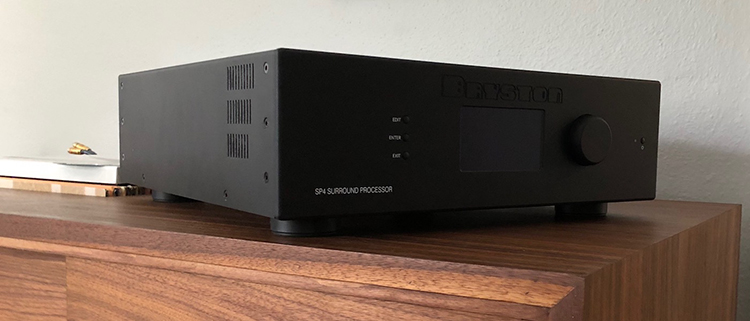
The SP4 is Bryston’s first processor for the immersive audio era. The SP4 decodes all three immersive sound formats (Auro-3D, Dolby Atmos, DTS:X) and includes their respective upmixers. The Bryston SP4 combines Dirac Live calibration with unrivaled bass management capabilities. It even natively supports multi-amped front speakers and multiple subwoofer arrays! The SP4 sounded fantastic in my system.
Bryston SP4 16-channel Surround Processor
- 16 user-configurable balanced outputs, up to 9.1.6 discrete channels
- Extremely flexible bass management
- Supports all modern immersive codecs (Atmos, Auro-3D, DTS:X) and upmixers (Auro-Matic, Dolby Surround, DTS Neural:X,)
- Passed Dolby Vision to our TV, though Dolby Vision not officially supported
- Dirac Live room correction (all channels)
- Dirac Live works on top of manual adjustments
- Modular design
- Bryston-typical build quality
- Intuitive browser-based setup/configuration
- Interoperability with IR universal remotes needs fine tuning

Bryston has over two decades’ experience with multichannel sound. The 16-channel SP4 is the first fruit of Bryston’s partnership with Auro Technologies spinoff StormAudio. The SP4 complements but does not replace Bryston’s 7.1-channel SP3.
DESIGN:
16 Channel Immersive Preamp/Processor
DECODING/UPMIXING CHANNELS:
16
DAC:
16-channel TI ADAU1966 (109.5dB SNR)
INPUT SAMPLING RATES:
up to 192kHz
INTERNAL SAMPLING RATE:
48kHz (analog and digital sources)
AUDIO FORMATS:
Auro-3D, Dolby Atmos, DTS:X, legacy formats
AUDIO UPMIXERS:
Auro-Matic, Dolby Surround, DTS Neural:X
ROOM CORRECTION:
Dirac Live (all channels)
MULTIWAY SPEAKER CROSSOVERS:
6, 12, 18, or 24 dB/Octave
BASS MANAGEMENT CROSSOVERS:
12 or 24 dB/Octave, Linkwitz-Riley
EQUALIZATION:
10-band per channel, parametric, not overridden by Dirac Live
DIGITAL INPUTS:
3x HDMI 2.0/HDCP2.2; 4x HDMI 1.4/HDCP 2.2 (software configurable to 7x HDMI 2.0); 3x coaxial, 3x optical
ANALOG INPUTS:
8, user-assignable
AUDIO OUTPUTS:
16, user-assignable, balanced (XLR); dedicated stereo downmix
VIDEO FORMATS:
4K UHD, HDR10, HLG
MAXIMUM VIDEO RESOLUTION:
4K 60fps 4:4:4 8bpc
DEEP COLOR SUPPORT:
12bpc
REMOTE CONTROL:
Browser-based WebUI, iPad app, IP (Crestron, Control 4, Savant, RTI), IR (with external adapter).
REMOTE TRIGGERS:
4x 12VDC trigger outputs, user assignable by profile and input
ETHERNET:
Network control
INCLUDED ACCESSORIES:
Removable rack ears
DIMENSIONS:
17” wide x 3RU (6.3”) high x 18.25” deep
WEIGHT:
28.8 Lbs.
MSRP AS TESTED:
$13,995
Company:
SECRETS Tags:
Bryston, Bryston SP4, Surround Sound, Immersive Sound, Processor, Processor Reviews, Bass Management. Room Correction, Dirac Live, Processor Review 2018
“Immersive” systems add speakers above the ear-level surround array to create a 3D bubble of sound. SECRETS recently covered several high-end immersive processors:
Bryston needs no introduction. You’ve already read about the Canadian audio specialist’s DACs, headphone amps, and speakers, as well as odes to their heritage of reliability and performance. In addition to the lofty channel count, the Bryston SP4 offers the most comprehensive, flexible feature set I have seen on a processor at any price. Its bass management is category-leading.

The SP4 is minimalist in front. In back there are 7 HDMI inputs and 6 legacy digital audio inputs. The 8 assignable analog (RCA) inputs are digitized (48kHz sampling). SECRETS’ Technical Editor, Dr. David Rich, notes Bryston’s older SP3 uses higher-performance DACs than the SP4 (3.5dB better SNR, 15dB lower THD) though the SP4’s ultra-precise laser-trimmed balanced line drivers cost 12x more than typical solutions. The SP4’s 16 balanced outputs are fully assignable. Two additional balanced outputs provide stereo downmix. They can drive a headphone amp and apply SphereAudio immersive binaural upmixing. Due to review time constraints I was unable to give SphereAudio a thorough audition. The SP4 is modular, so future upgrades (DAC upgrade, AES or USB inputs) are possible in addition to Bryston’s current 16-channel unbalanced “Super Zone 2” upgrade.
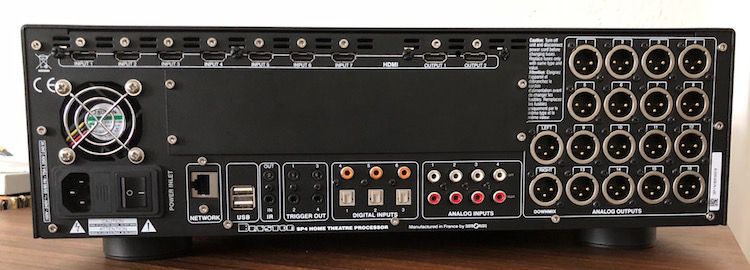
The SP4 has no physical remote. Who would use it? There is also no on-screen display. Everything flows through Bryston’s browser-based interface (“WebUI”) or iPad control app. While hopefully Bryston will introduce a true iOS control app, WebUI was usable on my iPhone X.
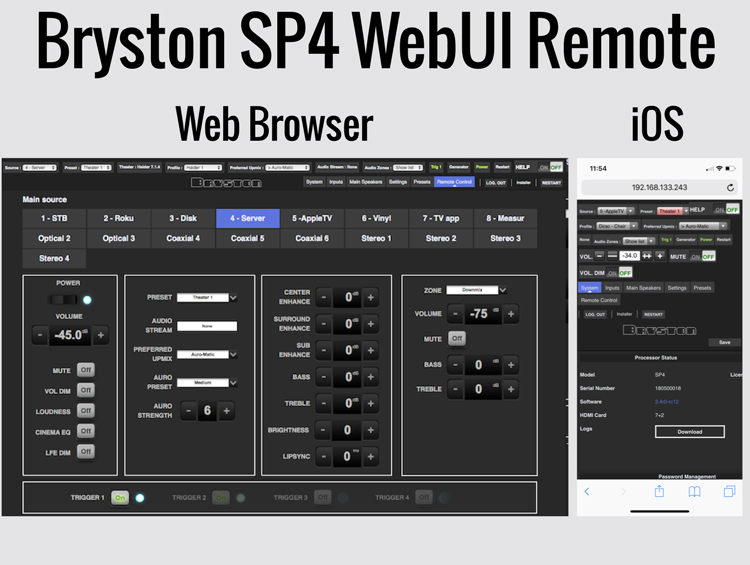
A Bryston SP4 owner (or her dealer/installer) uses WebUI to set up the processor. While anyone with the SP4’s IP address can access the WebUI remote, setup/configuration is password-protected.
I had one setup hiccup. Initially, the SP4 did not pass video from our AppleTV 4K. Bryston’s Gary Dayton accurately diagnosed the issue: I plugged the TV into HDMI output 1. Only HDMI output 2 is HDMI2.0. Once I moved the cable, AppleTV worked. The “Dolby Vision” icon even popped up on our LG OLED!
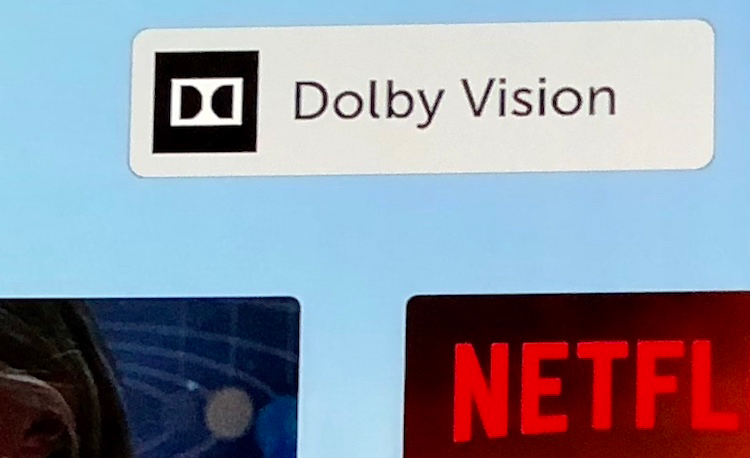
The SP4 does not officially support Dolby Vision, so my experience may not apply to other installations. That said…our Dolby Vision compatible Marantz AV7703 only passes standard HDR over the same cables. HDMI: go figure.
The SP4 supports a staggering 73 different speaker layouts. It supports 20 different layouts with 7 ear-level speakers!
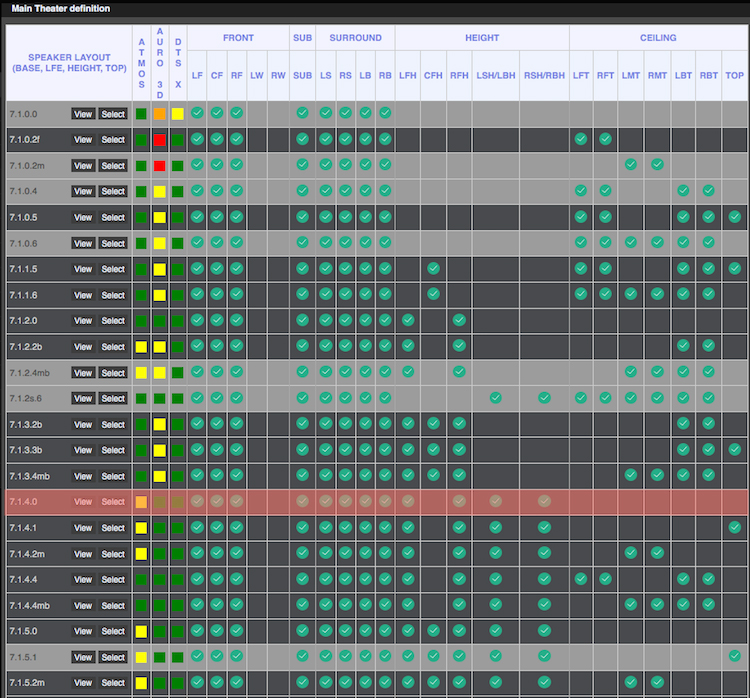
The “traffic light” color-code indicates suitability for each immersive codec: “7.1.4.0-channel,” highlighted above, gets green for Auro and DTS:X, and yellow for Atmos. Click “View” for a snappy visualization of a given layout. Below, “7.1.4.2m.”
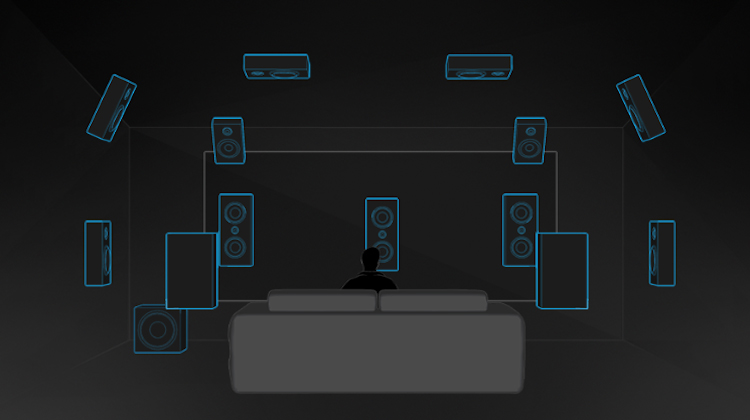
The SP4 can multi-amp front channels, with adjustable crossover, delay, and 10-band PEQ for each “way.” Surrounds, heights, and subwoofers can be clustered. Here is the SP4 configured to run 4 subwoofers.

The SP4’s bass management is the best I have seen. Bass management is a stubbornly persistent shortcoming in AVRs and processors across brands and price points. SECRETS exposed this problem and offered commonsense solutions 11 years ago! More recently, SECRETS’ Technical Editor, Dr. David Rich, discussed issues with common bass management approaches in a technical article. Bryston nails it. Each channel gets adjustable highpass and lowpass cutoffs and slopes, level, delay, and 10-band parametric EQ. Bass from each channel can be routed to that speaker, subwoofers, or both.
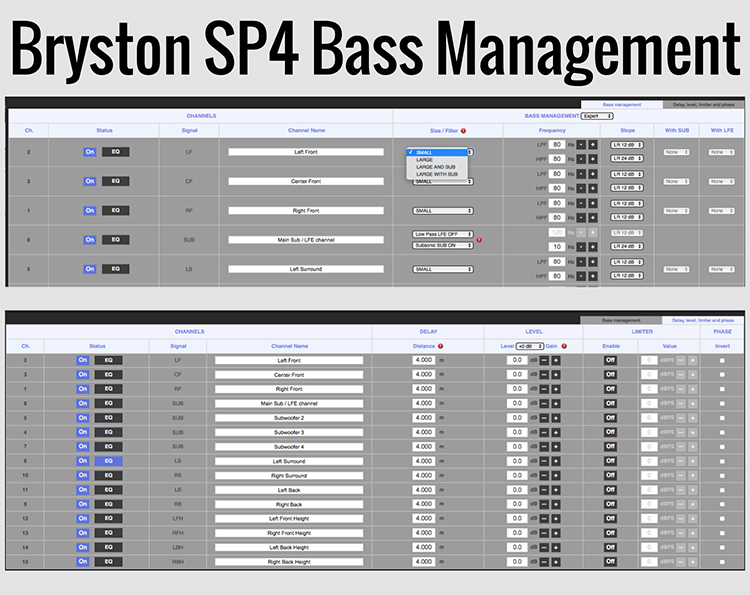
It gets even better! Usually, Dirac Live overwrites any manual level or delay settings. However, the SP4’s “Dirac group” option maintains relative settings within a group, effectively replacing a separate DSP subwoofer controller. I grouped 4 subwoofers below:
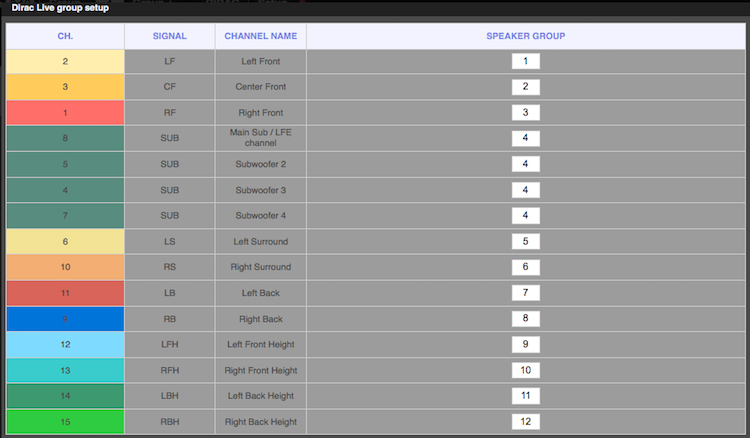
Purists will rejoice in removing a digital conversion loop. Pragmatists get reduced cable clutter.
The SP4 deploys Dirac Live Calibration Tool (“DLCT”) on your Mac (or PC) for room correction and equalization. Chris Eberle covered DLCT in his NAD T758 AVR Review. The SP4 does not include a microphone. I used my Cross Spectrum Labs calibrated miniDSP UMIK-1. Bryston provides 4 target curves. Additionally, curves are fully customizable in DLCT: add, remove, or manipulate “break points” to change the shape; pull “curtains” to limit the affected frequency range.
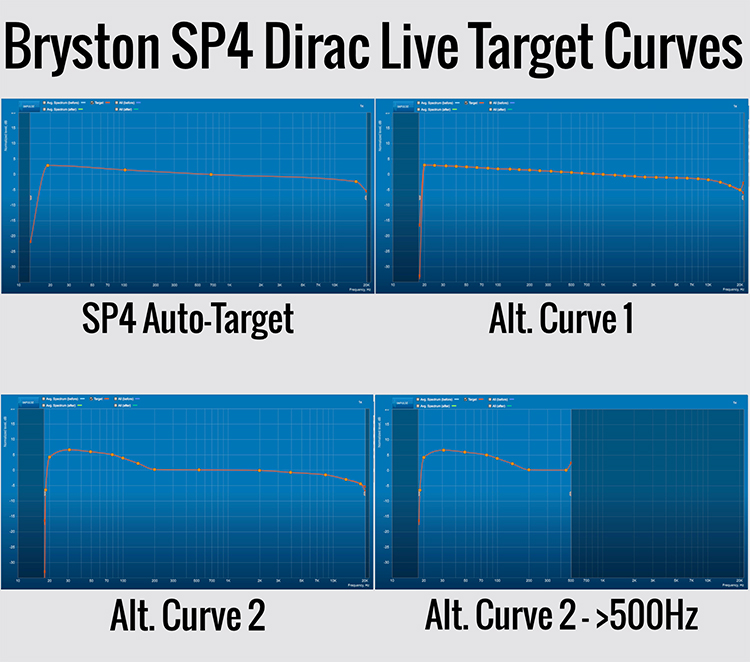
Bryston’s DLCT version only stores one calibration, or “Project.” NAD’s version stores 3, and miniDSP’s 4. Multiple Projects allow the user to rapidly switch between target curves. The workaround is to build different “Profiles” and incorporate them into “Presets” that are selectable in WebUI or the iPad app. Profiles store Dirac data, and can include unique bass management and PEQ.
Also, a general DLCT criticism that’s not Bryston-specific: no standalone “measurement mode.” With a measurement mode, one could use Dirac’s measurement engine to aid with initial setup. This feature would be especially helpful for height speakers: external measurement software cannot yet sweep heights, but DLCT can. Currently only Anthem ARC offers this invaluable feature. Hopefully Dirac will add a measurement mode to future DLCT versions.
I installed the Bryston SP4 in a 7.1.4 channel system with on-wall height speakers and 4 subwoofers. I used 1 output from the SP4 for the 4 subs. Our subwoofer controller-amp (Crown DCI4|1250n) digitizes the input and routes the signal to four channels internally, negating both theoretical and practical advantages of grouping in the SP4. I set subwoofer crossovers in the SP4 to my usual 120Hz for all channels, with 4th-order rolloffs on both sides.
Before room correction, the SP4 impressed me with its low noise floor and ability to create an immersive sonic bubble. Dirac Live calibration transformed the sound from wow to WOW! All the technical details were pushed out of my consciousness as the speakers cohered into a virtuosic ensemble under the baton of a genius conductor. It went beyond “bubble of sound.” The soundstage became wider, deeper, and more vivid. The Dirac-calibrated Bryston SP4 provided the most engaging immersive presentation I have heard to date, in our home or elsewhere.
I tried all 3 provided full-range target curves. I could not consistently hear differences between Auto-target and Alt. Curve 1. Alt. Curve 2 sounded marginally less open. I settled on Auto-target for most of my listening.
Unexpectedly, full-range Dirac equalization sounded much better on the SP4 than room correction (EQ only below the statistical region) alone.
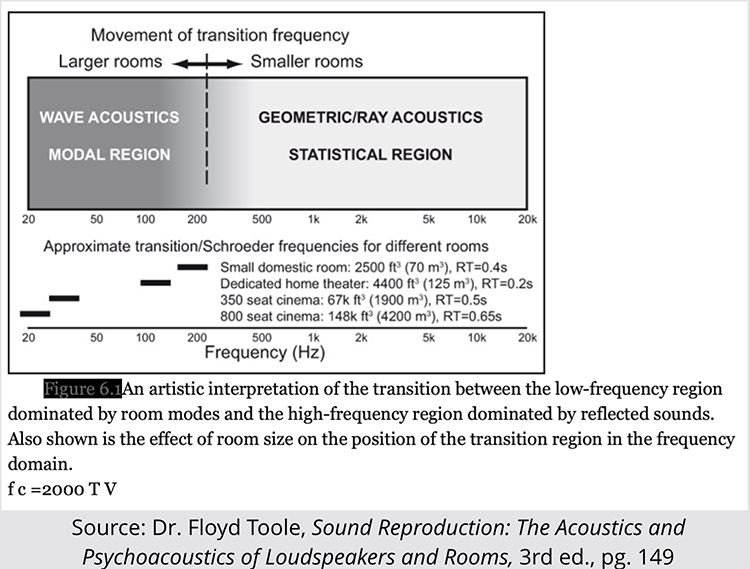
Here, limiting Dirac to room correction dimmed sonic vividness dimmed and shrank soundstage depth. As I wrote in this SECRETS discussion, I don’t like changing a speaker’s voicing based on listening-area measurements. That still holds in stereo, including with Dirac Live, but no longer for immersive sound. Perhaps timbre mismatches that might be perceptually irrelevant in side or rear speakers matter with added front speakers. Alternately, Dirac Live may improve LCR matching.
While the SP4 offers loudness compensation, it increased boom and shrillness while hurting dialog intelligibility. I turned it off. The SP4 nonetheless maintained resolution and clarity at low levels.
The SP4 sounded so good in our system that my biggest criticism is ergonomic: lingering incompatibilities with our Harmony remote. (Bryston sent me beta firmware to activate the IR ports.) Harmony controlled the SP4 as a device reliably, but not when the SP4 was part of an “Activity” such as “Watch TV.” Then it didn’t consistently turn on/off or switch inputs. Dealers want to pair a processor at this price with an expensive IP-based home automation system. Datasat’s RS20 omits IR control entirely; at least Bryston gave the SP4 an IR option! While I’m persuadable, I have not yet seen a compelling value-add for home automation over a great universal remote such as Harmony. Undoubtedly some troubleshooting between Bryston, Storm Audio, and Logitech will resolve these issues should a buyer want to use a Harmony remote with her SP4.
Another disappointment had nothing to do with the SP4 but was more acute. Many Auro-encoded disks don’t play on American players. One example: Amazon sells the Vienna Philharmonic’s 2018 Neujahrskonzert in Auro-3D – but only on Region B/2 Blu-Ray. That disappointment aside, here are a few selections (immersive and upmixed) that really shined through the SP4.
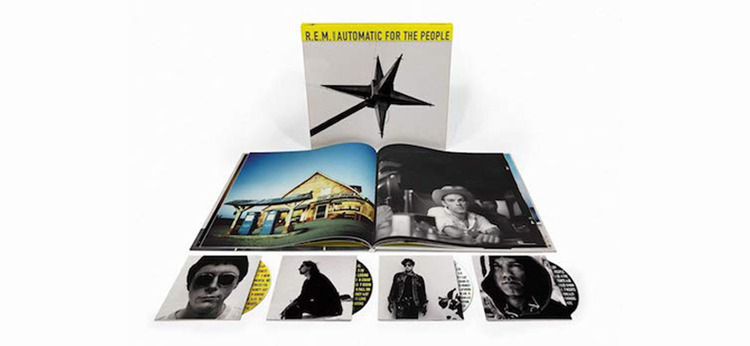
R.E.M., “Automatic for the People,” 25th Anniversary Deluxe Edition (Blu Ray Audio; Dolby Atmos)
If you have an immersive system, BUY THIS SET! While expensive due to all the frills, the Atmos Blu-Ray greatly improves on the already excellent 5.1-channel DVD-A. It renders an expansive soundscape that tricks your mind into thinking you’re witnessing a studio playthrough.
The Bryston SP4 rendered “Automatic for the People” with incredible detail inside that expansive soundscape. The strings in “Drive” were individually recognizable, and percussive snaps in “Star Me Kitten” jumped out from the mix. Often, Michael Stipe’s vocals projected so distinctly from standing height in the center of the soundstage that one looked for a microphone stand. The SP4 also maintained the timbre of piano notes in “Nightswimming” as they swirled through the room. I’ve heard demo systems mess that up.
Hopefully this release was a financial success for R.E.M. and Craft Recordings, leading to more immersive remixes. Thom Yorke, are you reading? “Kid A” is almost 20! “OK Computer” is nearly 25.
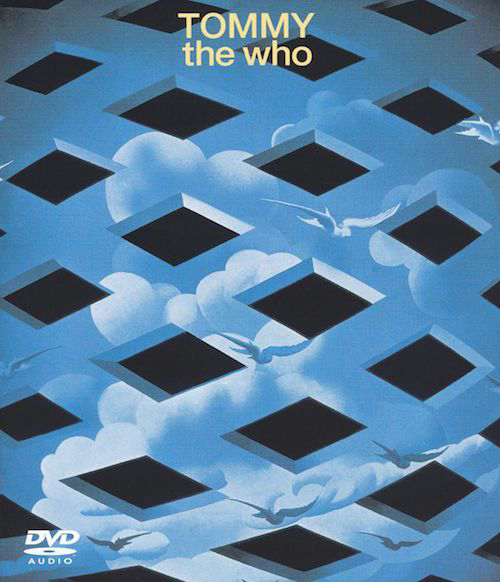
The Who “Tommy”
(5.1-channel DVD-A)
The Mobile Fidelity CD remaster and my well-worn hand-me-down LP from my mom sound as if the original engineer tried to compensate for 2-channel audio’s spatial limitations by heaping on reverb. Pete Townsend stripped much of that out of the 5.1-channel mix, instead relying on the additional channels to create scale. The result is a “Tommy” that sounds more like a stage performance than a studio creation.
This 5.1-channel mix rewards tight speaker-subwoofer integration, so no wonder it sounded so right through the SP4. From the Overture on, the SP4 rendered tactile and propulsive but squeaky-clean bass, in addition to sharp clarity and general awesomeness.
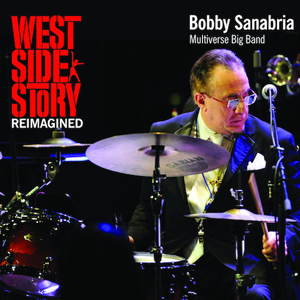
(Tidal HiFi, Auro-Matic immersive upmix)
“West Side Story Reimagined” is an arrangement of the Leonard Bernstein musical (except “I Feel Pretty”) for Latin jazz ensemble to celebrate the “Lentennial.” It was recorded live at Dizzy’s Club Coca-Cola in NYC’s Time Warner Center as a benefit for post-Irma/Maria Puerto Rico. The orchestration is percussion left (audience perspective) and center, brass and saxes on the right.
I tried all three immersive upmixers on “West Side Story Reimagined” and other 2-channel music. I always preferred Auro-Matic. I wonder if Auro improved Auro-Matic since I reviewed Marantz’s AV7702. I did not find the same spatial sameness from the SP4. Also, the SP4 offers adjustments to tailor Auro-Matic’s performance that I do not recall on the AV7702. I hope Dolby and DTS develop music modes for their immersive upmixers. Dolby Surround and Neural:X both steer music to the surround speakers too aggressively for me.
On “West Side Story Reimagined” Auro-Matic expanded the perceived size of our room without detracting from the performance in front or placing instruments in odd locations. The percussion bridge to “Mambo” in “Gym Scene” stayed anchored in place, rather than whizzing around the room. Auro-Matic and the SP4 also added depth and clarity to the cymbal solo intro to “Tonight,” and opened up the raucous trombones in “Cool.”

Whiskey Tango Foxtrot
(Blu-Ray, DTS:X)
Whiskey Tango Foxtrot is the only disk I own encoded in DTS:X. As Jim Milton noted in his Blu-Ray review, WTF was mis-marketed as a comedy, because Tina Fey. It is actually a drama with incisive commentary about all sides in the Afghanistan conflict, with only a few light moments.
The quality of the soundtrack, and the Bryston SP4’s ability to translate the soundtrack’s bits into goosebumps, was apparent from the first scene.
Foreign correspondents are partying in their hostel, House of Pain’s “Jump Around” booming through the hostel’s PA. Then a bomb explodes nearby. A concussive wave swelled through our living room. The hostel’s chandelier rattled above, as the clatter of scurrying reporters surrounded me. The SP4’s top notch coherence also heightened the film’s emotional punch as Radiohead’s “Nude” supported WTF’s dramatic climax.

NFL Week 1
I think live sports are the killer app for immersive sound. I imagine an immersive mix of a football game locating you in a seat, with the action of players, fans, and stadium swirling around you and above you as you focus on the action on the field. The NFL and other leagues do not yet broadcast in immersive sound. In fact, NFL Game Pass streams in 2.0-channel. That is too bad.
I tried all three upmixers before settling on Dolby Surround. I watched every snap of Washington at Arizona.
The third sonic dimension heightened the sense of deflation in the seats at Arrowhead stadium as Cardinals fans endured “Adrian [Peterson] doing Adrian things” (to quote the color commentator) to the Arizona defense. I also watched parts of several other games. I found myself watching more of each game than I intended. Sometimes I forgot to fast-forward to the next snap as I enjoyed the coherent “bubble” rendered by the SP4. The SP4 even heightened the realism of commercials, such as one that starts with a kid talking to all the appliances before piloting a drone. The drone starts offscreen. My head whipped around and involuntarily followed the sound as the drone “buzzed” overhead from back-left to front-right. I thought a large insect was flying overhead until I saw the drone on screen.
Generally, audible differences in AVRs and processors arise from three sources: bugs, bass management, and room correction software. Bugs are bugs, and hopefully fixable once discovered. Bass management I discussed above. Room correction systems differ markedly in target curve contours, precision of target curve fit, and customizability. Accordingly, this bench test focuses on the performance of Dirac Live as implemented on the Bryston SP4. For comparable measurements, see my reviews of the Marantz AV7702 processor and Denon X4100 AVR. Front speakers are the same, but subwoofers are upgraded.
Unless otherwise specified, all measurements are 6-point (center of head at primary listening position and random samples from a roughly 5’ bubble around it) spatial averages, smoothed 1/12-Octave. I believe random sampling tests real-world efficacy and stability better than measuring at microphone positions used for calibration.
The first figure shows the right speaker plus subs with Dirac Live off, and the three provided full-range target curves.
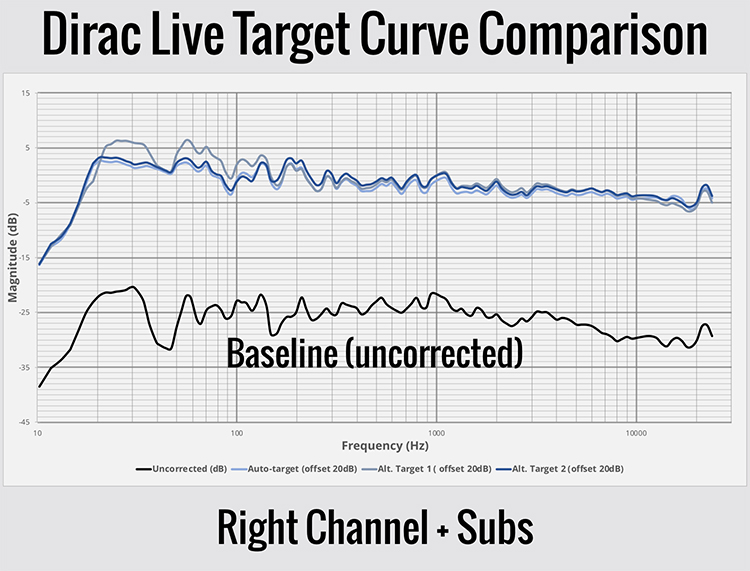
The target curves are clearly reflected in the measured responses. I heard no difference between the Auto-target and Alt. Curve 1; this graph shows why. Alt. Curve 2 had the worst fit: the “ski jump” starts a little lower in frequency than expected. I suspect the ~45Hz null is wider than on the other target curves because of Dirac’s boost limits.
The speaker-subwoofers transition looks rougher above than I heard. Bass is generally mixed mono, so a left+right+subs measurement better reflects as-heard performance. The figure below shows the stellar results attainable thanks to the Bryston SP4’s sophisticated bass management and Dirac Live.
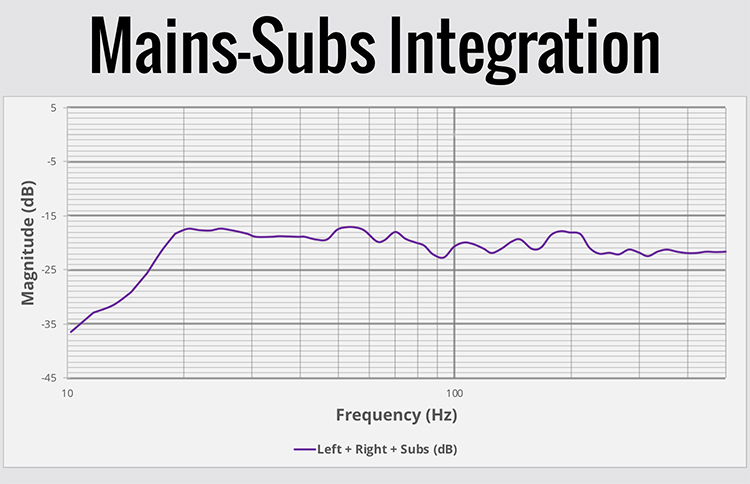
The next figure focuses on the subwoofers alone, before and after correction. The 4 subwoofers have relative gains and delays adjusted to reduce seat-to-seat variation. The idea is: make the bass similar at every seat, so room correction on top will improve bass quality at every seat. Otherwise, room correction will improve some seats but degrade others. These measurements are unsmoothed to expose every narrow peak and null. Unsmoothed bass measurements are rarely shared: nobody wants to admit how bad their in-room bass response is!
The 16dB variance (12.5dB at 1/12-Octave smoothing) is actually quite good for an uncorrected subwoofer system in a room. The 7.6dB (3.6dB at 1/12-Octave smoothing) variance after Dirac is incredible. Better still, most of the remaining variation is 3 narrow nulls. Subjectively, that is tighter, better controlled, and more tactile bass. See why good room correction is so important?
The next figure examines Dirac Live’s precision, or how closely measurements match the target curve. Baseline average (light blue), Auto-target (orange), and predicted average response (green) come from DLCT. Measured response is superimposed in black. Ignore everything below 120Hz: the measurement is speaker + sub but the DLCT graphs are right speaker only. According to Dirac’s Flavio Fellah, DLCT plots with 1/8-Octave smoothing, so the post-processing measurement is slightly higher resolution.
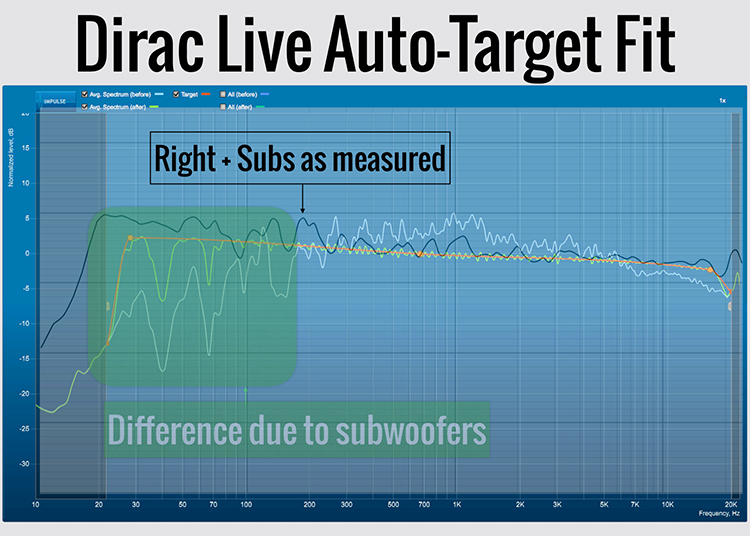
Precision is generally good, though the speaker was not equalized quite as flat as Dirac predicted. In the statistical region a light touch usually beats heavy-handed EQ.
The next figure shows the equalization Dirac applied to the right speaker. This “inverse curve” is a single-point measurement of the difference between the uncorrected response and the equalized response.
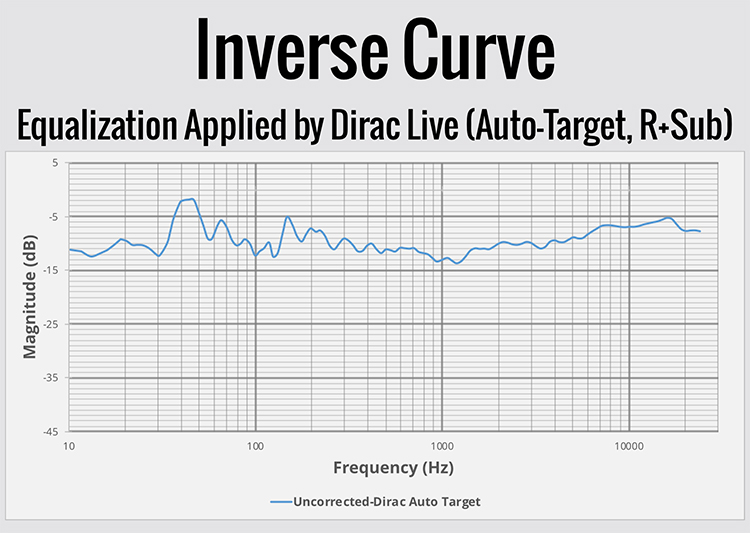
Dirac equalized gently above ~500Hz, with no narrow, steep corrections. I consider that a good thing.
Above I wondered if the SP4’s sonic coherence results from improved channel matching. I could not measure the height channels. These LCR measurements were taken at the same 6 points for each speaker.

Upper bass and lower midrange channel matching improves slightly. Above that, little difference. Dirac may improve channel matching considerably if the center channel differs from left/right speakers.
The last figure concerns ancillary features.
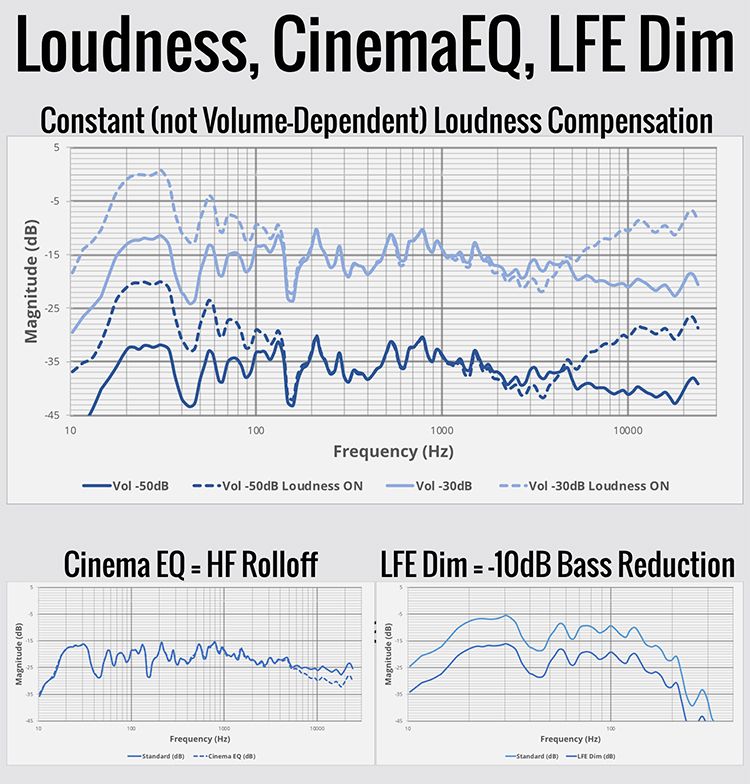
Cinema EQ rolls off highs. LFE Dim attenuates LFE 10dB. Loudness unfortunately does not adapt to changes in volume setting. The SP4 deserves more sophisticated loudness compensation, along the lines of Audyssey DynamicEQ or Dolby Volume.

The BRYSTON SP4 made my system sound truly spectacular, and made me forget the $13,995 price tag.
- Coherence of sound with Dirac Live
- Bass management done right (a rarity!)
- Exceptional setup flexibility
- Support for sophisticated multiple subwoofer control without an external processor
- Intuitive WebUI control app
- High build quality
- HDMI reliability equal to “mainstream” AVRs and processors
- More sophisticated loudness compensation
- Higher-spec DAC
- A “measurement mode” added to Dirac Live Calibration Tool
- True iOS control app that runs on iPhones
- Fine-tuned IR remote control
I’m going to miss the Bryston SP4. It is an exceptional immersive processor. On the audio side, it decodes everything, offers incredible flexibility even for systems with multi-amped speakers and multiple subwoofers, and provides exceptional sonic coherence with the help of Dirac Live. On the video side, HDMI performed better than promised (passed Dolby Vision in my setup), and was as reliable as on mass-market gear. If you’re planning a cutting-edge immersive system and can swing the price, give Bryston’s SP4 your highest consideration.


